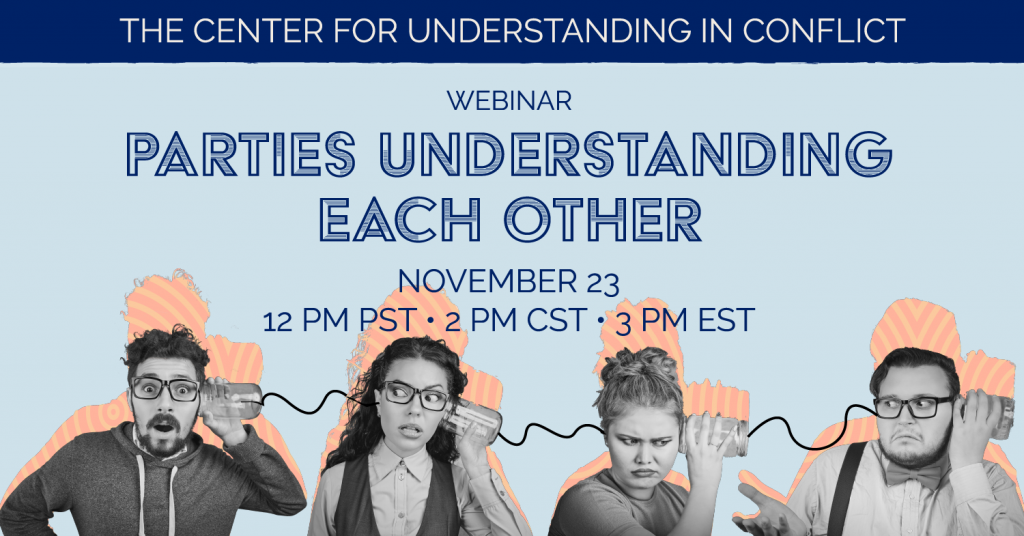Clicking over from the newsletter? Click here to continue reading where you left off.
The Understanding-based model of mediation fosters understanding for parties in conflict, of themselves, the situation they faced and even, possibly, each other. Understanding offers an alternative to coercion, and allows the parties to move beyond the right and wrong framework. The expression of that understanding of the emotions, matters of import, and the realities of the parties serve as a paradigm shift in the conflict.
Achieving understanding requires a multi-dimensional approach. First, we want to offer people the opportunity to feel empathy for each other, and the mediator can help the parties develop this empathy. Second, the parties in conflict work to deepen their understanding of the other person. We want to deepen not just understanding each other’s position, but what lies behind it—what it is they care about and what is important to them. Finally, the parties should be able to demonstrate their understanding of the other person.
Looping—listening with the intent of understanding, demonstrating understanding, clarifying, and closing the loop—can offer insight into the dynamic and relationship. For example, if parties are stuck in the conflict, facilitating discussion through looping by asking them to share what they think is going on with the other person can help those involved in the conflict to better understand their own realities, the external realities they share, and how they perceive the other person and themselves in these contexts.
If both people can understand their own view and each other’s, then they are in a much better place to be able to solve the problem because they have the whole picture. Otherwise, if each person is holding only their own piece of the picture, it fractures the process making it impossible to see the entirety of the conflict. The other person’s view is part of the external reality that the other person faces, and each person faces problems individually as well.
This process also sometimes means opening up to vulnerabilities. Not everybody can do this, nor is everybody willing to do this—particularly when the issue of vulnerability conflicts with needs to protect oneself or involves poignantly painful emotions. Mediators can be supportive in helping their clients setup boundaries to avoid hurt feelings and toxic emotions so they feel empowered and not threatened by the process of expressing understanding. Most critically it is important to distinguish between understanding and agreeing. To demonstrate understanding does not mean that you are agreeing that the other person is right. Nor should it necessarily weaken a party’s conviction about their own view.
Most critically it is important to distinguish between understanding and agreeing. To demonstrate understanding does not mean that you are agreeing that the other person is right. Nor should it necessarily weaken a party’s conviction about their own view.
It is worth noting that participants do not necessarily need to emotionally care about the other person’s realities to find a solution; however, in order to negotiate something that the other person will say yes to requires caring at least intellectually to better understand the landscape in the big picture. This mental approach also lessens some of the vulnerability tied to understanding.
If lawyers are present in the mediation, they can be helpful in creating the bridge to demonstrating understanding between the parties. The lawyer can demonstrate understanding—even if a client cannot. Feeling support from their lawyer can also allow an opening beyond the person’s capacity should their lawyer not be present. This is something that the mediator cannot provide for them in the same way.
In some cases, the parties may never be in a position where demonstrating understanding will be helpful. It is important that the mediator structure the process with the parties so they feel safe before engaging in a formal expression of mutual understanding. The parties should be given the opportunity to discuss whether this is something that they actually want to do, and to express any concerns they may have about the process. It is important for parties to have a real conversation, rather than pressure from the mediator—particularly to avoid the cost of the parties losing themselves. Ultimately, it is up the parties to determine if they want this approach and mediators need to be wary of offering false promises to add weight to the parties’ decision on whether to proceed with the expression of understanding.
Ultimately, the effort to understand is what matters. Whether or not we can truly understand what it’s like to be somebody different from us, we can demonstrate understanding of our common humanity. While there are things that we share, we have to respect that there are things we do not. To respect the other person is fundamental, and demonstrating our willingness and desire to understand their perspective can help create an atmosphere of mutual respect.
Want to learn more? Join Gary Friedman and Katherine Miller for their webinar, Parties Understanding Each Other on Monday at 12 PM PST / 3 PM EST.


